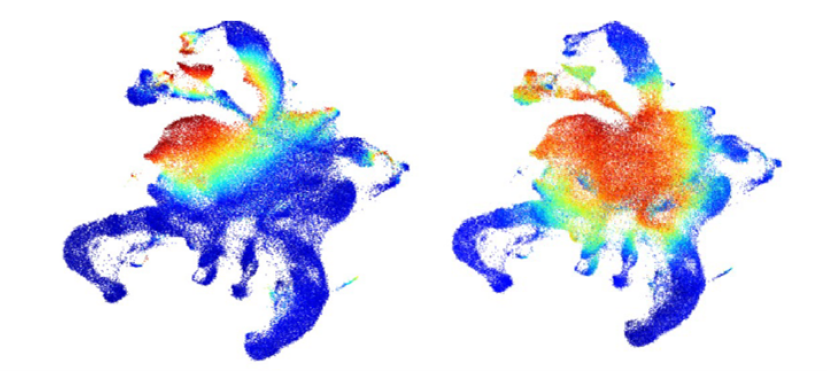What is the Inferelator? How New Software Can Track Complex Transcription Factor Patterns
Post Date: September 7, 2022 | Publish Date:

Emily Miraldi, PhD, a computational biologist in our Division of Immunobiology, was featured prominently in a Sept. 5, 2022, article in Nature as one of a group of world-class experts who are using mathematical models to predict how complex networks of transcription factors can influence how a gene functions.
The article reports that Miraldi helped develop a software tool called The Inferelator, then went on to use the tool to make important discoveries about how two genes known to play major roles in inflammatory bowel disease are regulated by vast networks of transcription factors operating within type 17 T-helper cells (a class of white blood cells).
That study was published in Jan. 2019, in Genome Research.
“This paper was the first time where we were able to validate that if you start with just RNA-seq and ATAC-seq [data], you can get a more accurate gene-regulatory network relative to gene-expression data alone,” Miraldi says.
More recently, Miraldi has been working with 14 colleagues at Cincinnati Children’s and the University of Cincinnati to develop and test a related tool called maxATAC that uses deep learning A.I. methods to improve how scientists can find specific transcription factor binding sites.
The article also features comments from Aviv Regev, PhD, a pioneer in single-cell biology, now serving as executive vice-president of Genentech Research and Early Development.
Regev spoke at Cincinnati Children’s in July 2021 as part of the ongoing Envisioning Our Future For Children Virtual Speaker Series.
Coming up
The next speaker in the series is scheduled to be Diana Bianchi, MD, Director of the Eunice Kennedy Shriver National Institute of Child Health and Human Development and Head of the Prenatal Genomics and Therapy Section for the Medical Genetics Branch of the National Human Genome Research Institute.
Register here







